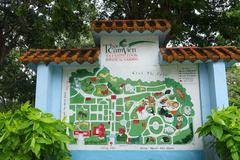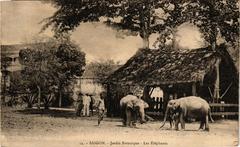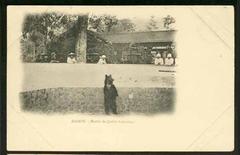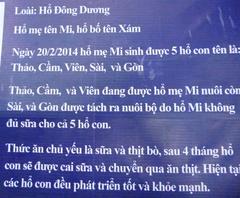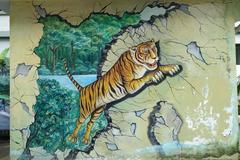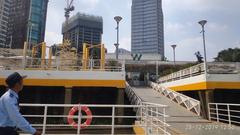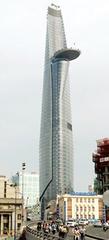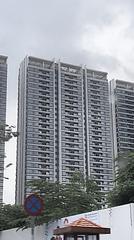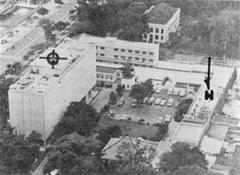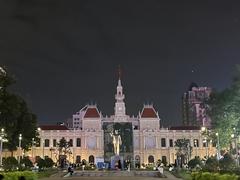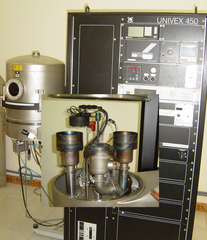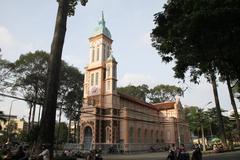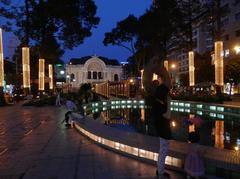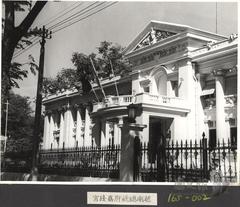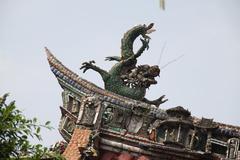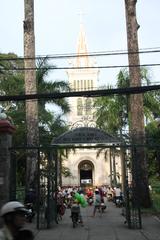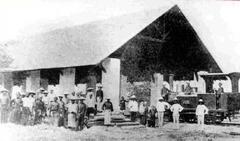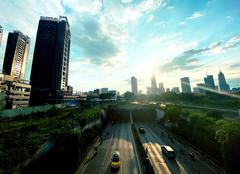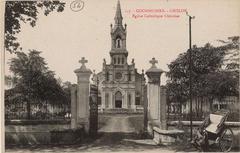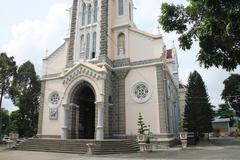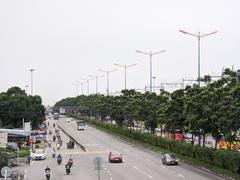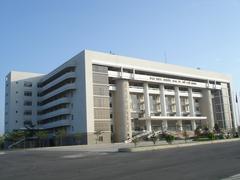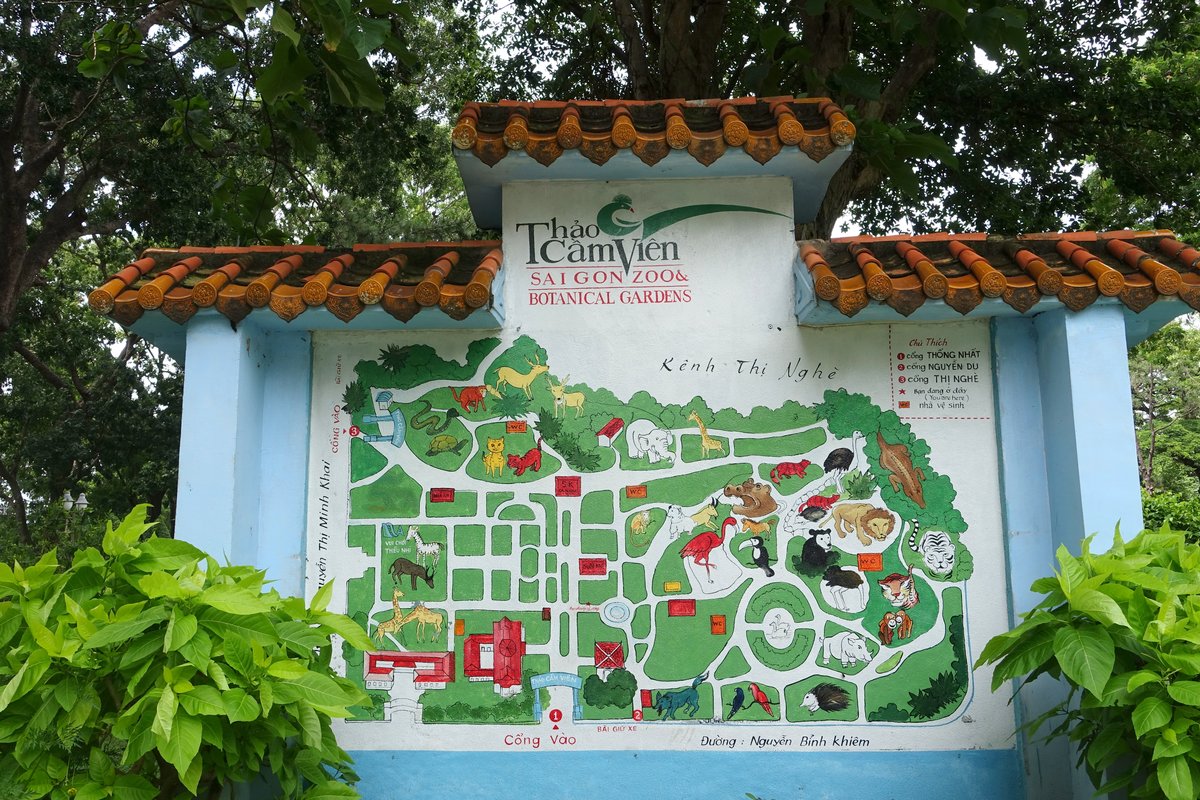
Visiting Saigon Zoo and Botanical Garden: Hours, Tickets, and Tips
Date: 17/07/2024
Introduction
Nestled in the vibrant heart of Ho Chi Minh City, the Saigon Zoo and Botanical Garden stands as a historical and cultural emblem. Established in 1864 by the French colonial administration, it is among the oldest zoological and botanical institutions globally. Originally conceived by Admiral Pierre-Paul de La Grandière, the garden was envisioned as a botanical haven to acclimatize exotic plant species from around the world. Under the meticulous guidance of botanist JB Louis Pierre, who was also renowned for his work at the Calcutta Botanical Garden, the space flourished into a biodiversity haven. Over the decades, the zoo expanded its focus to include a diverse array of animal species, evolving into a multifaceted attraction that offers both educational and recreational experiences (Saigon Zoo and Botanical Garden). Today, it not only serves as a sanctuary for flora and fauna but also as a testament to Vietnam’s resilience and cultural heritage.
Table of Contents
- Introduction
- A Walk Through Time - The History of Saigon Zoo and Botanical Garden
- Main Attractions and Features
- Visitor Information
- Conservation Efforts and Community Impact
- Challenges and Future Directions
- FAQ
- Conclusion
A Walk Through Time - The History of Saigon Zoo and Botanical Garden
The Saigon Zoo and Botanical Garden, a verdant oasis in the heart of bustling Ho Chi Minh City, boasts a rich history intertwined with Vietnam’s own tumultuous past. Established in 1864 by the French colonial administration, it stands as one of the oldest zoos in the world and a testament to the changing tides of time.
The Early Years - A Colonial Legacy (1864-1954)
The garden’s story begins with a decree from Admiral Pierre-Paul de La Grandière, then Governor of Cochinchina, who envisioned a botanical garden to acclimatize plants from around the world. Spanning a modest 12 hectares, the Jardin Zoologique et Botanique de Saigon, as it was then known, became a reality under the guidance of botanist JB Louis Pierre.
Pierre, already renowned for his work at the Calcutta Botanical Garden, meticulously curated a collection of exotic flora, transforming the space into a haven of biodiversity. Animals were a later addition, gradually introduced to enhance the garden’s appeal and educational value. During this period, the garden served as a symbol of French colonial ambition and a popular retreat for the European elite. Its elegant landscaping, inspired by the Jardin des Plantes in Paris, reflected the prevailing European aesthetic of the time.
Transition and Transformation (1954-1975)
Following the French withdrawal from Vietnam in 1954, the garden transitioned into Vietnamese hands, renamed Thảo Cầm Viên Sài Gòn. This period saw significant expansion, with the total area increasing to 17 hectares. Despite facing challenges during the Vietnam War, the garden remained a cherished green space for the city’s residents. It provided a sense of normalcy amidst the turmoil, offering a place of respite and recreation.
Post-War Recovery and Modernization (1975-Present)
After the reunification of Vietnam in 1975, the Saigon Zoo and Botanical Garden entered a new phase of development. The focus shifted towards conservation and education, with efforts made to improve animal welfare and promote biodiversity. The garden underwent significant renovations and expansions in the late 20th and early 21st centuries. New enclosures were built, animal care practices were updated, and educational programs were expanded.
Main Attractions and Features
Animal Exhibits
The Saigon Zoo and Botanical Garden is home to a diverse collection of animals from around the world, housed in exhibits designed to mimic their natural habitats.
Primate House - This exhibit showcases various primate species, including orangutans, chimpanzees, and gibbons. Visitors can observe their playful antics and social interactions.
Reptile House - Home to a fascinating array of reptiles, including pythons, crocodiles, and turtles. The exhibit provides insights into the unique adaptations and behaviors of these cold-blooded creatures.
Bird World - This large aviary houses a colorful variety of bird species, from majestic eagles to vibrant parrots. Visitors can walk through the enclosure and observe the birds in a more natural setting.
African Safari - This exhibit features animals native to the African savanna, such as zebras, giraffes, and ostriches. Visitors can observe these animals roaming in a spacious enclosure that simulates their natural habitat.
Big Cat Territory - Home to majestic big cats like lions, tigers, and leopards. The exhibit provides a safe and enriching environment for these apex predators, allowing visitors to witness their power and grace.
Botanical Gardens
Beyond the animal exhibits, the botanical gardens offer a serene escape from the bustling city.
Orchid Garden - A vibrant display of orchids, showcasing the diversity and beauty of these delicate flowers. Visitors can admire the intricate patterns and vibrant colors of various orchid species.
Bonsai Garden - This serene garden features meticulously cultivated bonsai trees, some of which are centuries old. Visitors can appreciate the art and patience required to create these miniature masterpieces.
Medicinal Herb Garden - This garden showcases a variety of plants used in traditional Vietnamese medicine. Visitors can learn about the healing properties of these plants and their cultural significance.
Other Attractions and Activities
Lake Area - The zoo features a picturesque lake where visitors can rent paddle boats or simply relax and enjoy the scenery. The lake is home to various bird species, adding to the tranquil ambiance.
Children’s Playground - A dedicated play area for children, featuring swings, slides, and other fun activities. The playground provides a safe and enjoyable space for kids to burn off energy.
Educational Programs - The zoo offers educational programs and guided tours that provide insights into animal conservation, biodiversity, and the importance of protecting wildlife.
Cultural Performances - On weekends and holidays, the zoo hosts traditional Vietnamese cultural performances, including music, dance, and martial arts demonstrations. These performances offer a glimpse into the rich cultural heritage of Vietnam.
Visitor Information
Visiting Hours
The zoo is open daily from 7:00 AM to 6:00 PM.
Ticket Prices
- Adults: 50,000 VND
- Children (under 1.3 meters in height): 30,000 VND
- Children under 1 meter: Free
Accessibility
The garden is wheelchair accessible, with ramps and accessible restrooms available throughout the park.
Nearby Attractions
- Reunification Palace: A historical landmark with significant importance in the reunification of Vietnam.
- Notre-Dame Cathedral Basilica of Saigon: An iconic architectural marvel with French colonial influence.
Visitor Tips
- Arrive early: The zoo tends to get crowded, especially on weekends and holidays. Arriving early allows you to avoid the crowds and enjoy a more peaceful experience.
- Wear comfortable shoes: The zoo covers a large area, so comfortable walking shoes are essential.
- Stay hydrated: Bring a reusable water bottle and take advantage of the water fountains located throughout the zoo.
- Respect the animals: Maintain a safe distance from the animal enclosures and refrain from feeding or disturbing them.
- Support conservation efforts: Consider making a donation to the zoo to support their animal conservation and research programs.
- Check for special events: The zoo hosts various special events throughout the year, such as animal feeding sessions and cultural performances. Check their website or social media pages for upcoming events.
- Allow ample time: To fully appreciate all that Saigon Zoo and Botanical Garden has to offer, allocate at least half a day for your visit.
Conservation Efforts and Community Impact
Beyond its recreational value, the zoo plays a crucial role in conservation efforts. Housing over 2,000 animals from 125 species, many of which are endangered, the zoo actively participates in breeding programs and conservation initiatives. These efforts, coupled with educational programs, raise awareness about animal welfare and environmental protection, contributing to a broader understanding of conservation within the community.
Challenges and Future Directions
Despite its enduring significance, the Saigon Zoo and Botanical Garden faces challenges in the 21st century. Urban development pressures and evolving ethical considerations regarding animal captivity necessitate ongoing adaptation and improvement. The zoo’s administration is actively working to address these challenges, focusing on:
- Improving animal enclosures and welfare: Efforts are underway to expand and enrich animal habitats, ensuring they meet modern zoological standards and provide a higher quality of life for the animals.
- Enhancing educational programs: The zoo is developing interactive and engaging educational programs to further its mission of conservation awareness and environmental education.
- Promoting sustainable practices: Initiatives are being implemented to reduce the zoo’s environmental footprint, including waste management and energy efficiency programs.
FAQ
Q: What are the Saigon Zoo visiting hours? A: The zoo is open daily from 7:00 AM to 6:00 PM.
Q: How much are the Saigon Zoo tickets? A: Adult tickets are priced at 50,000 VND, and children’s tickets cost 30,000 VND.
Q: Are there guided tours available? A: Yes, the zoo offers guided tours as part of their educational programs.
Q: Is the zoo wheelchair accessible? A: Yes, the zoo is wheelchair accessible with ramps and pathways designed for visitors with mobility challenges.
Q: What are some nearby attractions? A: Nearby attractions include the Reunification Palace and the Notre-Dame Cathedral Basilica of Saigon.
Conclusion
The Saigon Zoo and Botanical Garden is more than just a traditional zoo; it is a living museum that encapsulates Vietnam’s rich history and commitment to conservation. From its establishment in 1864 to its modern-day efforts in animal welfare and environmental education, the zoo remains a cherished landmark in Ho Chi Minh City. Visitors can immerse themselves in its lush botanical landscapes, diverse animal exhibits, and cultural performances, making it a must-visit destination for nature lovers, history enthusiasts, and families alike. As the zoo continues to evolve, it strives to balance its historical legacy with contemporary ethical standards and sustainability practices, ensuring it remains a vital community asset for generations to come (Saigon Zoo and Botanical Garden).
References
- Saigon Zoo and Botanical Garden, 2024, Author (https://www.atlasobscura.com/places/saigon-zoo-and-botanical-gardens)
